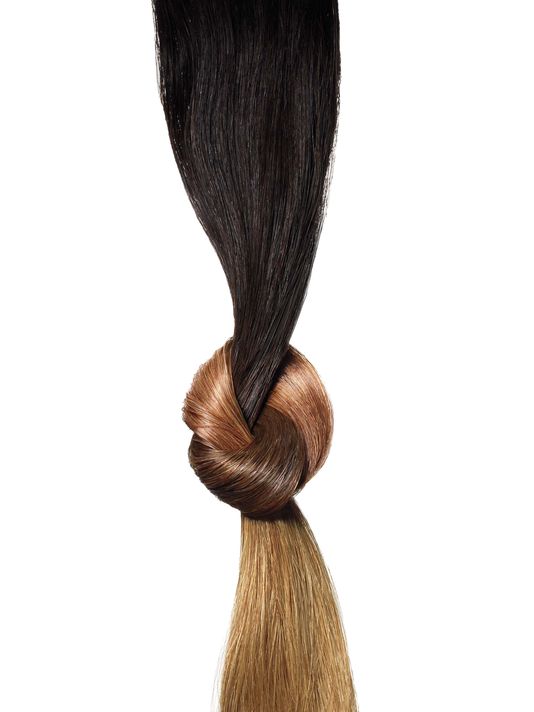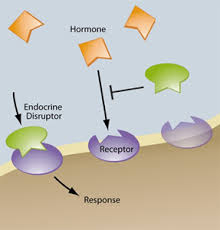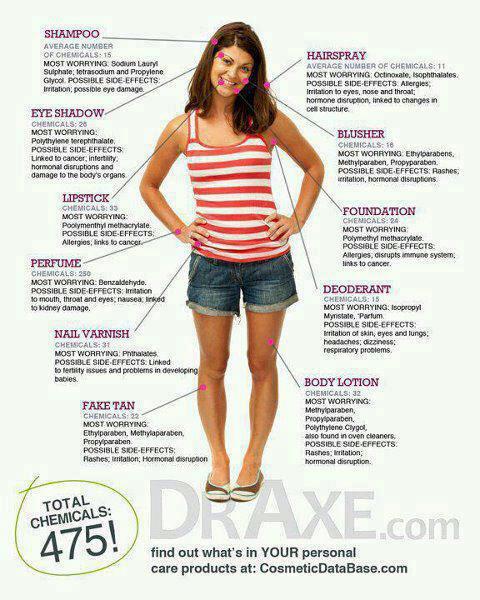Spice up the chilly months with our favorite "fall back timeless" hair colors.
FALL TRENDS: Lovely-Updo's, Braided Convenience & Mod Squad Men (picture perfect guide inside)
Youthful Fall HC Inspiration: Look & Feel Younger Instantly
A great haircut can make a woman look and feel ten years younger – instantly! A great haircut can hide wrinkles ("it ok"...we understand secret motives), add body and life, define the jawline, and enhance cheekbones.
All-time Classy Hairstyle
A classic hairstyle is soft and feminine, sophisticated, and timeless. A mid-length haircut for mature women is often best and age appropriate. Soft layers beautifully frame the face and add volume; the antidote to visually aged or thinning hair. Adding “bangs” may sound a little too scary – but done properly, they help cover age spots or wrinkles on the forehead that many women become sensitive to.
Variations of a medium length cut will compliment women differently. For youthful looking hair with bounce, one must start with healthy hair.
Coloring to Lighten and Brighten' Highlights can appropriately compliment your base color. Highlights (and lowlights!) are a key component to looking younger. I recommend having discussion with your stylist about the alternatives to dimension and placing highlights versus a solid color – when done wrong or with a conventional/home hair color job - you can pull the hair dark which is unflattering and harsh, especially against mature skin.
Low Cost - Big Impact
The best approach is to apply a "spot foil" of glowing blonde or bronze to bring brightness to your skin tone.
The next time you visit your hair salon, be prepared to step out looking younger, feeling younger, and absolutely loving your new style.
Contact our expert team today to lighten and brighten your hair color and style.
Your Guide to Xenoestrogens (be aware and avoid at all cost)
Before we move on with Xenoestrogens, a brief on Estrogens.
Xenoestrogens are derivatives of Estrogens. Their chemical structure acts like estrogen in the human body. They are highly estrogenic, fat-soluble and non-biodegradable compounds.
Estrogens are a group of steroid compounds, which are part of the hormone cycle and function as the primary female sex hormones in most female mammals. They are also used as part of some of the oral contraceptives, in estrogen replacement therapy of postmenopausal women. They also act as a powerful anti-inflammatory.
Xenoestrogens, in addition to being highly estrogenic, are fat-soluble and non-biodegradable. Prolonged exposure to Xenoestrogens causes early menstruation and can also cause breast cancer, uterine cancer, fibrocystic breast disease, ovarian cysts, endometriosis, premature sexual development, uterine fibromas, heavy periods, and infertility. Though our bodies are amazingly resilient, the immunity to endocrine disruptors is not strong enough.
Sources of Xenoestrogens:
Pesticides-
Pesticides are perhaps the biggest source of Xenoestrogens. They are highly estrogenic, and some experts estimate that the average American ingests over a pound of pesticides a year.
Xenoestrogens get into our system through our “food-chain” by means of chemical fertilizers and sprays used to disinfect crops. Most bio-accumulate, meaning they are stored in fat cells of fish, poultry and other food sources in increasing concentration until they reach the top of the food chain — where we consume them. Later, they accumulate in our fatty tissues (breast, brain, and liver) and can cause a variety of aliments as mentioned before.
Livestock’s-
A second major source of Xenoestrogens is the large amount of growth hormones given to livestock and poultry, most of which contains fat-soluble estrogens. When humans consume such live stock or their milk, we ingest those estrogens.
Organo-chlorides like dioxin (a by-product of chlorine when it is burned or processed), PCB’s, PVC’s, and some plasticizers are just a few of the many manmade chemicals that act like estrogen in our bodies. Many others have the effect of interrupting our normal endocrine function, hence the term “endocrine disruptors.”
Plastics-
Products associated with plastics such as bisphenol A and pthalates. Bisphenol-A was originally designed for use a synthetic estrogen replacement. It was found to work quite well as an antioxidant to prevent plastic from breaking down in the sunlight. Bisphenol-A is used in drinking water bottles, plastics used in baby bottles, plastics used to pack food, and some dental composites. Pthalates along with excess estrogen given to chicken used as food were suspected to cause girls as young as 18 months to begin to menstruate in Puerto Rico between 1970 and 1980. Pthalates are found in cosmetics, shampoos, hair dyes and more.
Cosmetics-
Preservatives used in skin lotions, shampoos, and body lotions such as the Parabens that include Methyl Paraben, Ethyl Paraben, Proply Paraben, Butyl Paraben. Researchers from the Department of Biology and Biochemistry of Brunel University in the United Kingdom have conducted a study and found that alkyl preservatives (methyl, ethyl, propyl and Butyl Paraben) are weakly estrogenic. The European Union has asked the European Cosmetics and Toiletry industry about these new findings and the implication for breast cancer. These preservatives are found in the vast majority of skin and body lotions, even in natural progesterone creams. Anything absorbed through the skin is 10 times the concentration of an oral dose.
Prevention:
Prevention of Xenoestrogens from entering our system can be done by either avoiding consumption of the very sources of Xenoestrogens if possible or by choosing organic and natural products for consumption. For example, consume organically grown produce and live stock only. Use cosmetics that are prepared without the use parabens. Avoid usage of plastic products that contain Bisphenol-A and pthalates.
Broccoli, and in particular, the indole 3 carbinol (I3C) found in broccoli, interferes with xenoestrogens. I3C increases the good estrogen (2-hydroxyestrone) to bad estrogen (16-alpha-hydroxyestrone) ratio by increasing the detox enzyme CP450 in the liver.
Besides the food we consume the next biggest source of Xenoestrogens could be Cosmetics. Kassie (owner of Kasia Salon/Skin Care.) feels strongly that - what we put on our skin is a major result of our hormonal problems. Skin is the largest organ of the body, acting like a huge sponge. She says. “Purely avoiding parabens, we’ve tagged our retail with broccoli seeds ready to sprout or plant, yielding anti-cancer phytonutrient found in cruciferous vegetables, offering an abundance of Indole-3-carbinol (I3C)”.
About the Author: Kassandra Kuehl, a natural products hair stylist and health coach, and believes that it is important for women pay close attention to the ingredients in their hair, skin, and body care products. Her goal is to help you wake up to the power of the choices you make every day, and how those choices impact your health and well-being.
Kassandra has many educational articles and info about her Organic Salon Services at www.KasiaOrganicSalon.com. Kasia Salon offers high-quality, natural skin care products to help improve your overall health of your skin, body, and soul!
If it's one thing our team knows, understands, and stands in empathy for - it would be hair loss. Hair loss can be very complicated to understand. It's a complex concoction of reasons a woman can start loosing hair at any given time in their life. It’s time to debunk those hair loss myths and find out the reality to what causes hair loss and thinning and find out if you are really losing your hair!
Myth 1: If your hair is thinning, it’s because of your mother’s side of the family.
-
Reality: Actually, scientific research proves that hair thinning can occur from mom or dad’s side of the family. Take a look at your immediate family’s hair. If they are losing their hair, you may likely do the same.
Myth 2: Only men suffer from hereditary hair loss.
-
Reality: Ladies, sorry to break it to you but this is false! Women can experience hereditary hair loss just like men. Men tend to lose and thin in concentrated areas, making it more noticeable, but women tend to experience loss and thinning on their entire head.
Myth 3: Women lose their hair after pregnancy and during and after menopause.
-
Reality: While that’s definitely an accurate piece of information, women can begin to lose their hair in their 20’s and even earlier in some instances.
Myth 4: If you’re stressed, your hair will permanently fall out.
-
Reality: During stressful times, hair may fall out but in most cases it should grow back.
Myth 5: If you’re losing hair, you are experiencing hereditary hair loss.
-
Reality: Did you know that 100+ hairs can fall out daily throughout the hair’s natural “resting” (non-growing) phase? If you’re losing hair constantly and it’s not growing back, then you could be onto something.
Myth 6: Shampooing frequently will make your hair fall out.
-
Reality: Since shampooing removes residues and build-up, hair will actually look fuller. It does not actually cause hair loss.
Myth 7: Chemicals, from coloring your hair, will permanently damage hair and cause loss.
-
Reality: While chemicals can weaken hair and cause breakage, unless the hair follicle has been damaged by chemical treatment, which rarely happens, loss is temporary.
Hopefully you’ve learned a fact or two from these hair loss myths and can help educate others as well. It’s never too late to learn how you can prevent or find the right solution for hair loss.
If you would like to learn more about the right solution for your individual hair loss please email (kassie@kasiaorganicsalon.com) or call me (612.824.7611) to set up a private and personal consultation.
You can also learn more about our multi-therapy solutions HERE!
Learn about the COMMON causes of hair loss HERE!
Set up a consultation HERE!
De-FRIZZ! Get a Keratin Express at a Fraction of the Time and Cost
It’s safe to say that summer is finally here! For some of us that means a season of battling frizzy and unmanageable hair. Don’t worry – our professional team has your back. Our Keratin Express Treatment is LOVED by our frazzled hair friends. In fact, they prefer to treat their hair with this efficient 15 minute add-on process every other color. Infused keratin gives you results for manageable, smoother and easier hair to style. It is great for all types – including colored, over processed, and for that “not quite curly wave.”
Liquid Keratin Infusion:
The hair is built in layers, one of these being your cuticle. The cuticle is made up of 95% keratin and is visible to the eye. The everyday wear and tear, hard water, curling irons, and synthetic products create a compound effect – resulting in dull, frizzy, lifeless hair. Think of damaged hair as Swiss cheese - by applying our keratin treatment the holes are made whole again. Keratin will protect the outside cuticle as well as provide internal structure to the cortex creating strength and a smooth shine.
Protein Deficiency
Those with textured hair automatically have a “keratin deficiency.” Our clients with this hair type see a remarkable transformation as they rehab! The more treatments you have the smoother and straighter your hair will become.
The cuticle will return back to its original state as the treatment washes out, although the hair Is left in much better over-all condition. Continuing to use these treatments will only result in healthier, stronger, smoother hair. Clients experience “the gift of keratin” for up to 2 months! Our keratin services are formaldehyde free and the only OSHA keratin approved service to date.
Get Expressed at a fraction of the time and cost!
Limited Time Special - Through July 1st Receive a Express Smoothing Treatment for $75. When combined with a color, receive this treatment for $69
Sip some Cherry Lemongrass Tea and enjoy our SUPER EXPRESS TREATMENT less than a hour or as a 15 minute add on to any cut or color service.
-
No process time
-
All hair types from very fine and thin hair to thick and unruly!
-
$100 ($20 OFF when added to a color)
-
NO FORMALDEHYDE
-
NO HARMFUL CHEMICALS
-
THIS IS NOT A BRAZILLIAN STRAIGHTENING TREATMENT!!
-
This is healthy for your hair, and in no way harmful!!!
-
Last one-two months depending on how often you wash your hair.
-
Prolongs rich color, tone and shine
Looking for a little more girl-power that is longer lasting? Call and speak with one of our stylist regarding the Keratin Smoothing Treatment that will last as long as 3-5 months.
Schedule@kasiaorganicsalon.com * 612.824.7611
Top 10 Reasons to do Laser Hair Treatment
Top 10 for Laser Therapy for Healthier Hair and Optimal Growth


















